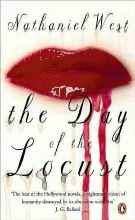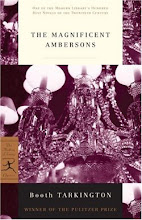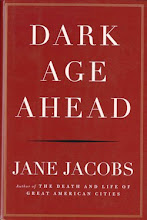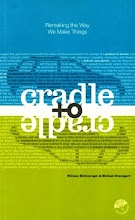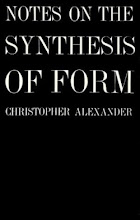 Art is a terminal disease of the mind. One quietly suffers isolation to understand its meaning. The artist can never purge themselves of the suffering of the art. It changes how you see the world. It consumes all senses. The only way to lessen the suffering is to produce art. It is a natural reflex like breathing underwater. It is the ultimate contradiction of the mind that has to be expressed in physical form and once it is embodied in physical form it is immediately dismissed in search of a better solution. The need is primal and cannot be ignored. A body of work from an artist is nothing more than discarded remedies consumed in an attempt to cure the madness. It is a mathematical equation that can never be solved, but the attempt to solve it leaves a legacy of wrong answers. M. C. Escher identified the connection “By keenly confronting the enigmas that surround us, and by considering and analyzing the observations that I have made, I ended up in the domain of mathematics, Although I am absolutely without training in the exact sciences, I often seem to have more in common with mathematicians than with my fellow artists”
Art is a terminal disease of the mind. One quietly suffers isolation to understand its meaning. The artist can never purge themselves of the suffering of the art. It changes how you see the world. It consumes all senses. The only way to lessen the suffering is to produce art. It is a natural reflex like breathing underwater. It is the ultimate contradiction of the mind that has to be expressed in physical form and once it is embodied in physical form it is immediately dismissed in search of a better solution. The need is primal and cannot be ignored. A body of work from an artist is nothing more than discarded remedies consumed in an attempt to cure the madness. It is a mathematical equation that can never be solved, but the attempt to solve it leaves a legacy of wrong answers. M. C. Escher identified the connection “By keenly confronting the enigmas that surround us, and by considering and analyzing the observations that I have made, I ended up in the domain of mathematics, Although I am absolutely without training in the exact sciences, I often seem to have more in common with mathematicians than with my fellow artists”It is a restlessness that can never be comforted. Albert Einstein said “True art is characterized by an irresistible urge in the creative artist”.
There is a story that in hell you are standing forever in a cool river with a burning thirst and when ever you bend over to quench the thirst from the river, the water disappears. That is the torment of art. If you do not have the passion, you will never understand it. You may look at art and like it or even love it, but you will never understand the extent of the suffering that produces it. The art itself is only a pale representation of the attempted resolution of the principals in conflict. Auguste Rodin said “The artist must create a spark before he can make a fire and before art is born, the artist must be ready to be consumed by the fire of his own creation”.
Some artists work in such a depth to resolve conflict that their work may not be understood or relevant for generations. Some work may never be understood by anyone but the artist and at times the artist themselves may not understand. I believe William Faulkner was incorrect when he said “The aim of every artist is to arrest motion, which is life, by artificial means and hold it fixed so that a hundred years later, when a stranger looks at it, it moves again since it is life”. I don’t think the aim of any artist concerns themselves with what a strangler thinks, it’s the exercising of demons.
It cannot be explained to someone that is not of similar mind and most disturbing is that there are so few similar minds. It is a mortal struggle of opposites in search of balance. Norman Podhoretz noted “Creativity represents a miraculous coming together of the uninhibited energy of the child with its apparent opposite and enemy, the sense of order imposed on the disciplined adult intelligence”.
Artistic pursuit is a desolate existence in which every experience is poured into the crucible of creative expression. Any thought is rendered and stripped to the essence of an abstract ideal in order to understand its complex relationship of meanings. Then by the process of brute force a concept is extracted from the seething crucible to be hammered yielding an imperfect resolution to be immediately discarded. The failure is then minutely examined in to discover its flaws. For each object that survives the process there are hundreds that are destroyed along the way. The deeper an ideal is pursued the father the artist distances themselves from society. As the threshold of enlightenment is approached the beauty of the rapture is solely outside the understanding of anyone that has not struggled with the burden. Carl Rogers stated ‘The mainspring of creativity appears to be the same tendency which we discover so deeply as the curative force in psychotherapy, man's tendency to actualize himself, to become his potentialities. By this I mean the organic and human life, the urge to expand, extend, develop, mature - the tendency to express and activate all the capacities of the organism, or the self.”
Society has convinced itself it understands art, but that is an illusion wrapped in ignorance and empathy. Is looking at a picture from the highest peak of the Alps the same as you being there? Are you immersed in the frigid thin air? Does the air cut your lungs like a knife? Does the sunlight reflecting off the snow burns your eyes? Does the wind howl like a freight train in your ears? Does your body tremble and scream in pain from the journey? Is every one of your senses exploding in rapture being immersed totally in experience? A picture can not convey the years of training and preparation. It can not reveal the mental conditioning. Pablo Picasso said “The artist is a receptacle for emotions that come from all over the place: from the sky, from the earth, from a scrap of paper, from a passing shape”. Society may empathize and value the suffering of the artist but they can never fully understand what it attempts to personify.
Jules Feiffer observed “Artists can color the sky red because they know it's blue. Those of us who aren't artists must color things the way they really are or people might think we're stupid”. The most cruel and ironic contradiction is that society controls my ability to express and communicate my art in the public whelm. Artists are selected by commissions of well intended citizens that can not place my work in context of meaning. Many times it reminds me of attempting to convey calculus to second graders. What of value is derived from the discussion? The public process rejects risk and controversy in favor of consensus and neutrality. The result is a suffocating embrace of mediocrity that excludes genus. Oscar Wilde once said “The public is wonderfully tolerant. It forgives everything except genius”. What society accepts as art is for the most part nauseatingly bland and disconnected.
Society isolates art to prescriptive uninspired “points of interest”. Assuming that placing art in such a location will transform it with relevance and significance. Art is severed from context and integration with its surroundings. Art must be fused into every aspect of our existence. It can not be isolated from the physical reality of the world. Art must be ubiquitous as it touches every endeavor in life. Unfortunately we can only dream. The narrow uninformed minds of the architects, developers, urban planners, city officials and engineers that are responsible for the built environment will never shed themselves of standard convention and embrace risk. Just look at the cities these self appointed critics have created. Where does art exist in our cities? It’s located at the top of a brutal 30 story glass and steel monstrosity in attempt to disguise its inhumanity. It’s located pushed into a forgotten corner of a crushing vacant expanse of granite plaza which provides all the atmosphere of the moon. It’s located impaled on a column overlooking some blue gas corridor so people can marvel at it at 70 miles per hour as they attempt to escape the visual violence of our urban centers. The future for the artist does not appear to be positive.
John Fitzgerald Kennedy forecasted “Above all, we are coming to understand that the arts incarnate the creativity of a free people. When the creative impulse cannot flourish, when it cannot freely select its methods and objects, when it is deprived of spontaneity, then society severs the root of art.” Society has indeed severed the root of art. All the artist can do is to suffer the torment of art in isolation as is their destiny.















